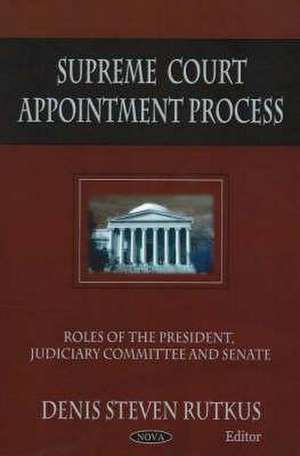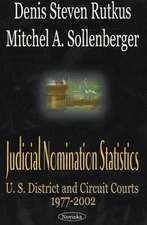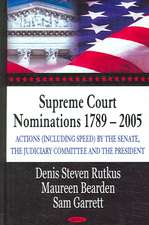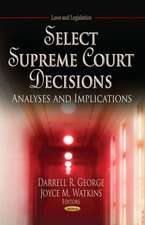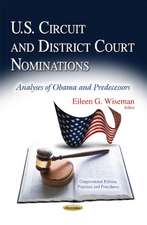Supreme Court Appointment Process: Roles of the President, Judiciary Committee, and Senate
Editat de Denis Steven Rutkusen Limba Engleză Paperback – 31 dec 2004
Preț: 377.63 lei
Preț vechi: 511.77 lei
-26% Nou
Puncte Express: 566
Preț estimativ în valută:
72.26€ • 75.45$ • 59.67£
72.26€ • 75.45$ • 59.67£
Carte disponibilă
Livrare economică 25 martie-08 aprilie
Preluare comenzi: 021 569.72.76
Specificații
ISBN-13: 9781594547119
ISBN-10: 1594547114
Pagini: 74
Dimensiuni: 137 x 206 x 8 mm
Greutate: 0.14 kg
Editura: NOVA SCIENCE PUB INC
ISBN-10: 1594547114
Pagini: 74
Dimensiuni: 137 x 206 x 8 mm
Greutate: 0.14 kg
Editura: NOVA SCIENCE PUB INC
Cuprins
Background; Presidents Selection of a Nominee; The Role of Senate Advice; Advice from Other Sources; Criteria for Selecting a Nominee; Background Investigations; Speed with Which President Selects Nominees; Recess Appointments to the Court; Consideration by the Senate Judiciary Committee; Historical Background; Pre-Hearing Stage; Hearings; Reporting the Nomination; Senate Debate and Confirmation Vote; Bringing the Nomination to the Floor; Criteria Used to Evaluate Nominee; Filibusters and Motions to Close Debate; Voice Votes, Roll Calls, and Vote Margins; Reconsideration of the Nomination; Nominations That Failed to Be Confirmed; Calling Upon the Judiciary Committee to Further Examine the Nomination; After Senate Confirmation; Index.
